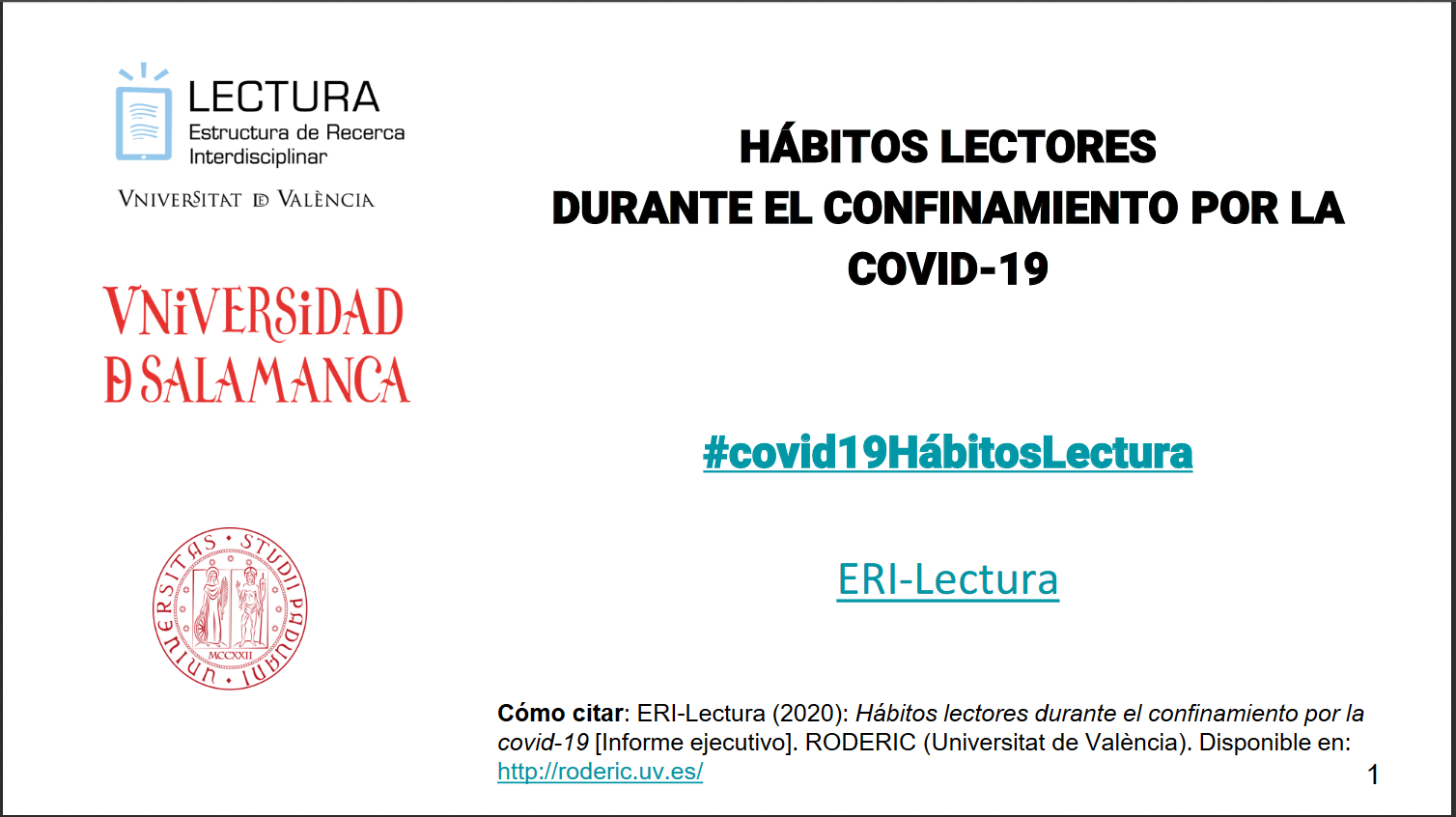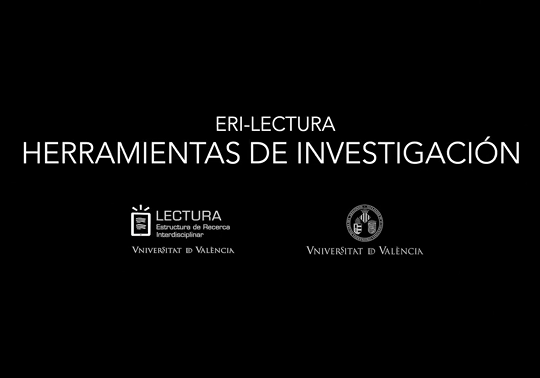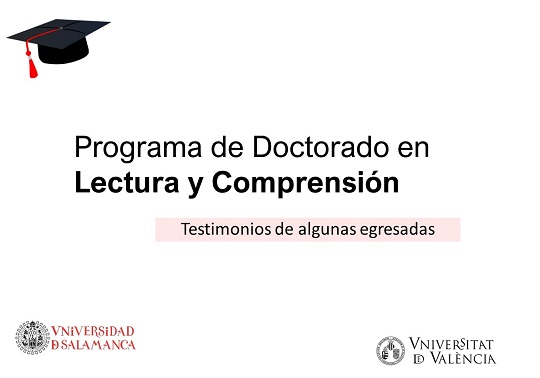
#covid19HábitosLectura
23 may 2020
The ERI-Lectura (a research institute composed of researchers from the Universitat de València and the University of Salamanca) has launched an investigation into Reading Habits during COVID-19 lockdown, with the collaboration of the Università degli studi di Padova (you can follow on twitter the tag #covid19HábitosLectura).
You can consult the results of the research in the publication:
|
|
ERI-Lectura (2020): Hábitos lectores durante el confinamiento por la covid-19 [Informe ejecutivo]. RODERIC (Universitat de València). Retrieved from http://roderic.uv.es/handle/10550/74797 |
Objective. Analyze and understand the changes in the reading habits of the Spanish adult population during the first four weeks of lockdown due to the emergence of COVID-19.
Tool. Online survey.
Participants. 4013 adult people (over 18 years of age), living in Spain.
Period. Between Saturday, April 11 and Sunday, April 19, 2020.
Some clarifications:
The results were analyzed with Linear Mixed Models. The database was weighted by gender and age to favor the generalization of the results.
We ask about the following reading activities:
- Reading news (newspapers, magazines, websites, twitter, etc.)
- Leisure reading (novels, comics, magazines, blogs, etc.)
- Social reading (Instagram, Facebook, WhatsApp, etc.)
- Work or studies (reports, websites, documents, etc.)
From the final report, we highlight the following findings:
1. During the first four weeks of lockdown, Spanish people increased the time they spent reading.
- Time spent reading went from 4 h 35 min/day before lockdown to 5 h 45 min/day during the lockdown.
- This increasing trend in time spent reading was similar for different types of reading situations: news, leisure and social reading.
2. Leisure reading (novels, comics, magazines or blogs) increased in the first two weeks.
- Before lockdown, Spanish people spent in leisure reading around 56 min/day; in the 1st and 2nd week, the leisure reading time increased to 1 h 14 min/day; in the 3rd and 4th week, leisure reading reached 1 h 21 min/day.
- By gender, the increase was greater in women.
- By age, leisure reading increased mainly among the youngest participants.
3. Reading of news in newspapers, magazines, websites or twitter increases.
- Time spent reading news went from 55 min/day before lockdown to 1 h 11 min/day in the 1st and 2nd week of lockdown.
- Although in the 3rd and 4th week, news reading time decreased to 1 h 4 min/day, its level remained above the pre-confinement phase.
- By gender, the news reading time increment was greater in women.
- By age, the news reading time increment was greater among the youngest participants but, they were also the ones who spend fewer hours reading news before the lockdown. Later, in the 3rd and 4th week, they returned again to the pre-lockdown level.
- Older adults continued to spend more hours than usual reading news in the 3rd and 4th weeks of lock-down.
4. Social reading from social media such as Instagram, Facebook or WhatsApp increases.
- It went from 1 h 3 min/day before lock-down, to 1 h 31 min/day in the 1st and 2nd week.
- The increment was stable in the 3rd and 4th week of confinement (1 h 28 min/day).
- By gender, the increment in social reading was greater in women.
- The increment in social reading was similar between the different age groups.
5. Reading for study or work (reports, websites or documents) remains stable.
- It went from 1 h 41 min/day before the lock-down to 1 hour and 50 min/day during the first four weeks of lock-down.
- By gender, the increment was greater in men.
- By age, the increment was much greater among young people.
We also asked participants about the reading format (paper vs. digital) and we advance a fact
6. During the lockdown, the reading time in digital format was equalized between age ranges, since all of them dedicated similar time to leisure reading in this format
We will publish all the results of the research in specialized journals. We will make them public through the official channels of the ERI-Lectura:
- The ERI-Lectura website: http://www.uv.es/lectura
- The ERI-LEctura blog: http://go.uv.es/lectura/blog
- The Twitter profile: @EriLectura
Coordinator: Salmerón, Ladislao. Team: Arfe, Barbara; Avila, Vicenta; Cerdán, Raquel; de Sixte, Raquel; Delgado, Pablo; Fajardo, Inmaculada; Ferrer, Antonio; García, María; Gil, Laura; Gómez, Nadina; Jáñez, Álvaro; Lluch, Gemma; Mañá, Amelia; Mason, Lucia; Natalizi, Federica; Perea, Manuel; Pi, Marina; Ramos, Luis; Ramos, Marta; Roca, Javier; Rosa, Eva; Rosales, Javier; Rubio, Alba; Serrano-Mendizábal, Marian; Skrobiszewska, Noemi; Vargas, Cristina; Vergara, Marta.
Any questions at: lectura@uv.es
You can follow us on Twitter: @EriLectura




















